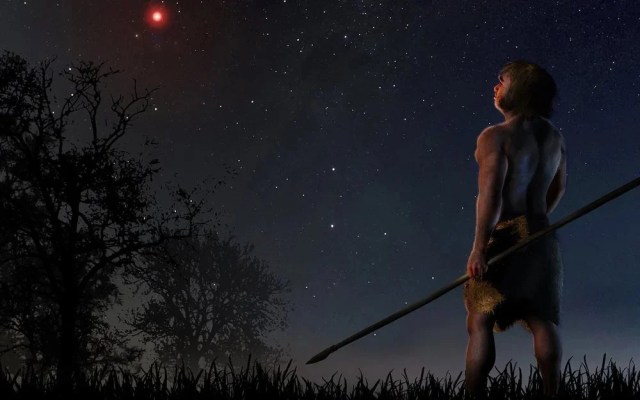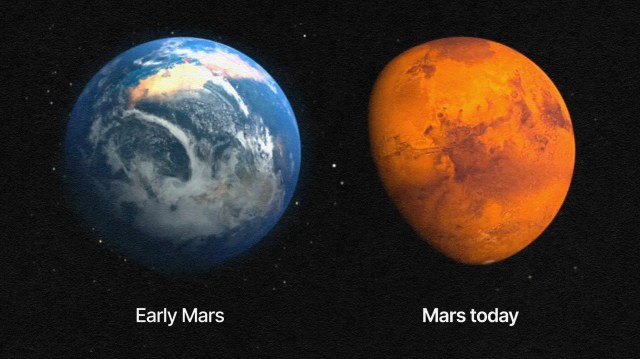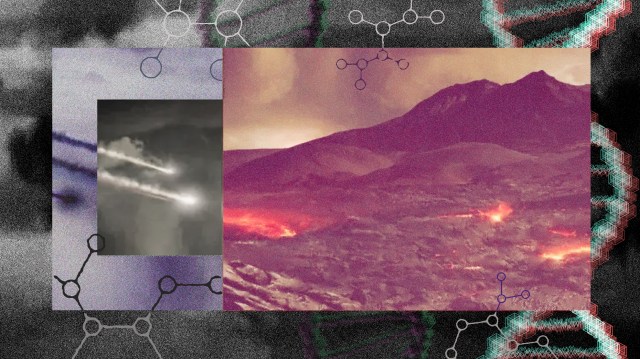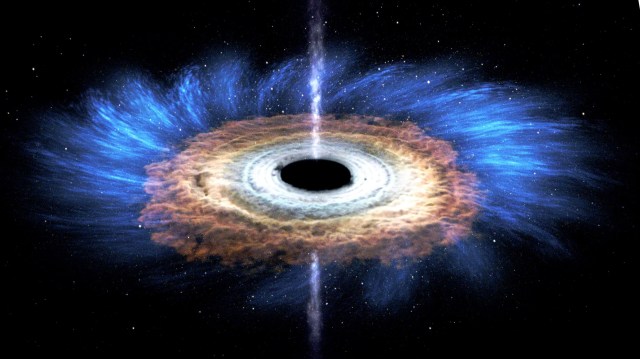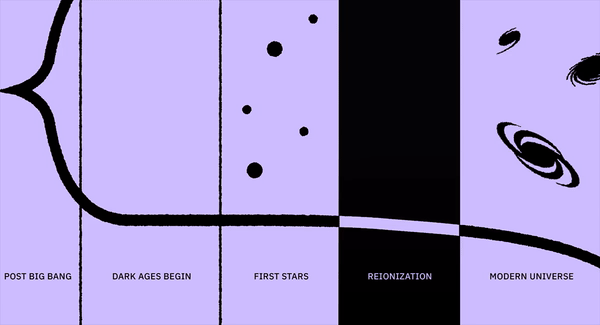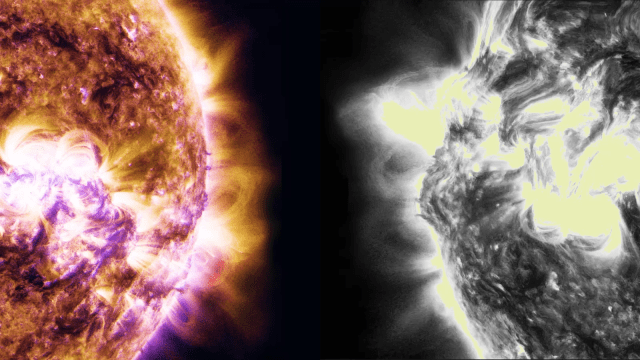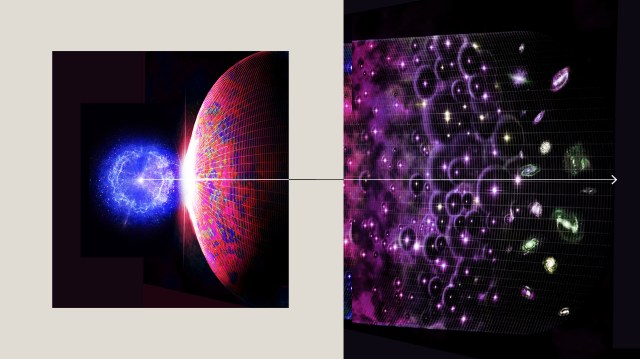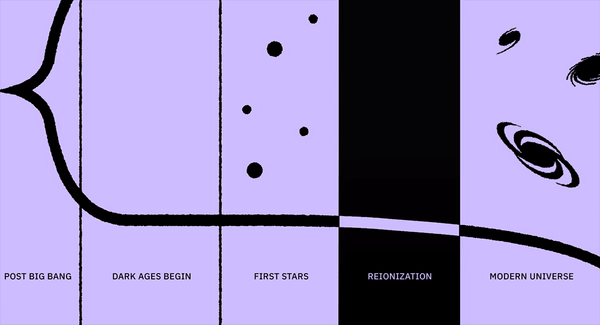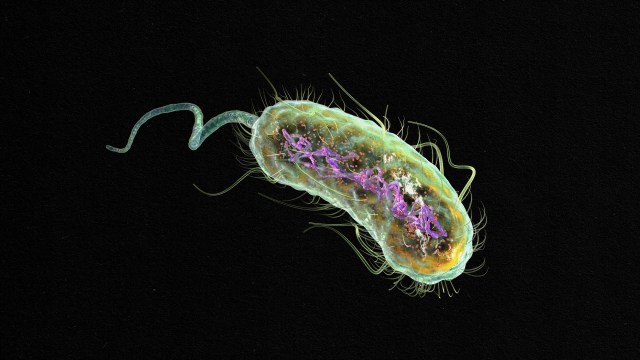What was it like when the first living worlds formed?

- In order to form the first inhabited planets, or living worlds, not only were rocky worlds and a variety of elements spanning the periodic table required, so were the right, stable conditions.
- Whereas it took more than 9 billion years for planet Earth to take shape, it’s plausible that the very first living worlds took shape just 1 or 2 billion years after the Big Bang.
- Some worlds that have all the right ingredients are still not ready, while others likely rose to prominence and died out long ago. Here’s what the first living worlds were probably like.
It’s almost unfathomable how far humanity has come in just the past few decades in terms of discovering potentially habitable worlds. As recently as 1990, there were no known, confirmed planets beyond the ones here in our Solar System; as of today, there are more than 5000 confirmed exoplanets, from super-Jupiters all the way down to sub-Earth sized worlds. Many of the smaller ones are around stable, Sun-like stars; many of them are thought to have thin atmospheres; many likely possess the heavy elements needed for life processes; many are part of multi-planet systems, with the potential for Earth-like temperatures and pressures at their surface.
While Earth might be the template for what we think of as an ideal, habitable world, we can still envision a wide variety of circumstances that are very different from our own that might also support life on a long-term basis. It took more than 9 billion years of cosmic evolution before Earth formed, however. It’s wildly unreasonable to assume that the Universe required all of that time to create the necessary conditions for habitability.
When we look at the minimum recipe for habitability, with the fewest assumptions, those conditions could have originated far earlier. The raw, chemical ingredients for life are a part of that puzzle, but can’t be the entire story. But in order to form a habitable planet, we have to look more deeply. Here’s what we need to know about the earliest habitable worlds.

The first thing you need, if you want to have an inhabited world, is the right type of star for it to orbit around. There could be all sorts of scenarios where life on a planet can survive even around an active, violent star, and remain habitable despite the hostility.
The lowest mass stars, the red dwarf stars like Proxima Centauri, emit flares and high-energy radiation in bursts. Any potentially habitable planet would be at risk of losing its atmosphere until that violent stellar activity settles down: a process that, for the lowest-mass stars, takes longer than the present age of the Universe. While you can imagine a scenario where:
- a magnetic field,
- a thick atmosphere,
- and life that was smart enough to seek refuge during flaring, radiative events,
might all combine to make such a world habitable on a sustained basis, it’s very difficult to imagine a thriving ecosystem on such a world during the early cosmic stages.
In other words, if we’re going to look for the first possibly inhabited planets, we should be looking around the stars that reach that “point of stability,” where they won’t be stripping an otherwise good candidate-for-life planet’s atmosphere away, and irradiating their surfaces with X-rays and flares, the soonest.

As it turns out, the more massive a star is, the more quickly it settles down into a state where it:
- doesn’t flare as frequently,
- doesn’t emit the highest-energy X-ray radiation in copious quantities,
- and doesn’t give off winds, particles, and other atmospheric-stripping effects,
in great bursts that would hinder an orbiting planet’s habitability. In addition, the more massive a star is, the greater the amount of overall energy it will give off. Combining these facts together could suggest that, if energy is what it takes to power life, perhaps these large volumes of space around these stars, where the temperature will be “just right” for liquid water on an Earth-like planet’s surface, might be the best place to look.
But if your star is too short-lived, habitability is impossible. Additionally, if your stellar system is too pristine, meaning it contains too few heavy elements, habitability will also be impossible, as the raw ingredients that are required for life processes simply won’t be present. If we want a planet that can house life, we need:
- a not-too-massive star that will live long enough for an orbiting world to evolve life on it,
- in a stellar system that’s enriched enough for a rocky world to form with the right chemical ingredients for life,
- but also a massive-enough star so that stellar activity won’t effectively sterilize any life that attempts to form.

The first generation of stars, known as Population III stars, is right out with these constraints. On average, these stars are very massive: 10+ times the mass of the Sun, meaning that they don’t live for ~10 billion years, but only for ~10 million years apiece: a timescale that’s too short to meet our necessary conditions. In addition, that first generation of stars is pristine, meaning that there are practically no heavy elements inside. (If we look at the amounts of elements like oxygen and carbon produced during the Big Bang, it’s down by a factor of many trillions below what the solar abundance of oxygen and carbon, the third and fourth most common elements in the Universe, are observed to be today.)
In fact, we now know what the rough threshold, in terms of chemical enrichment, is for planets to exist around stars: between about 10-25% of the fraction of heavy elements found in the Sun. Of the more than 5000 exoplanets that have been discovered, only:
- 1.8% of them are found around stars with a quarter or fewer of the Sun’s heavy elements,
- 0.2% of them are found around stars with a tenth or fewer of the Sun’s heavy elements,
- and 0 of them are found around stars with 5% or fewer of the Sun’s heavy elements.
Significant chemical enrichment is needed for planets at all, and that takes not only time, but multiple generations of stars.

In a stellar system that is enriched enough and whose stars are long-lived enough, we also have to recognize that cratering/impact rates, or a “heavy bombardment” period, will also disfavor the sustainability of life while it occurs. From the best observations we have today, of our own Solar System as well as other stellar systems, it takes about half-a-billion years, give or take, for those conditions to occur. In other words, we not only need prior generations of stars to live-and-die to create sufficiently enriched material to form rocky worlds, we also need time to pass on those worlds.
And why would we need rocky worlds? As far as we understand life, a world that houses it would need:
- an energy gradient, where it has a non-uniform energy input,
- the capability of maintaining a substantial-enough atmosphere,
- liquid water in some form on the surface,
- and the right raw ingredients so that life, given the right confluence of circumstances, can survive and thrive.
A rocky planet of large enough size, forming with the right atmospheric density, and orbiting its world at the right distance, has a chance. (A rocky moon of a gas giant would also have a chance.) Given all the planets that could possibly form around a new star and the astronomical number of stars formed in each galaxy, the first few of these conditions are easy to meet.

Orbiting a star will provide an energy gradient, as could orbiting a planet, a gas giant possessing a large moon, or simply a world that’s sufficiently geologically active. Whether from solar input or hydrothermal/geothermal activity, a non-uniform energy input is easy. With enough of the elements such as carbon, hydrogen, nitrogen, oxygen, phosphorus, and a few others, a substantial atmosphere will allow liquid water on the surface. Planets with these conditions should come into existence after only just a few hundred million years, but those worlds will also need enough time for their initially violent environment to settle down.
These needed elements must also be accessible, and so that typically requires an aqueous environment, where elements like phosphorus and sulfur can undergo reactions with carbon, oxygen, and nitrogen atoms, so that the right chemicals can be formed. It’s better if these environments are self-contained, such as in a tidepool, in a freshwater store on land, or some other shallow environment, as collisions between atoms and molecules are what lead to interesting binding patterns and structures. Without those conditions, it’s difficult to see how the right biochemical reactions that we require to have life processes can occur.

It’s also worth talking about where these conditions will arise first. In locations found on the outskirts of large galaxies, it might take many billions of years for enough generations of stars to live-and-die to get up to that necessary abundance. But in the hearts of these massive galaxies, where star formation occurs frequently, continuously, and out of the recycled remnants of prior generations of supernovae, planetary nebulae, and neutron star mergers, that abundance can rise quickly.
Even in our own galaxy, globular cluster Messier 69 shows evidence that stars had up to 22% of our Sun’s heavy element content by the time the Universe is just 700 million years old: approaching the conditions needed for rocky planets and life processes in under a billion years of cosmic history.
The centers of active galaxies, however, is a relatively difficult place for a planet to be considered habitable, as the accompanying cosmic fireworks are a hazard that must be reckoned with. Wherever you have stars continuously forming, you have a spectacular slew of cosmic fireworks. Gamma ray bursts, supernovae, black hole formation, quasars, and collapsing molecular clouds make for an environment that is, at best, precarious for life to arise and sustain in.

To have an environment where we can confidently state that life arises and maintains itself, we need for the star-forming process to come to an abrupt end. We need something to put a stop to star formation, which in turn puts the kibosh on the activity that is most threatening to habitability on a world. That is likely to be feedback from stars, which will clear away the central environment of gas and dust, and soon after, the central black hole, rather than being in an active state, will go quiet. It is for these reasons that the earliest, most sustainably habitable planets might not be in a galaxy like ours, but rather in a red-and-dead galaxy that ceased forming stars billions of years ago.
When we look at galaxies today, some 99.9% of them still have populations of gas and dust in them, which will lead to new generations of stars and constant, ongoing star formation. But about 1-in-1000 galaxies stopped forming new stars some 10 billion years ago or more. When their external fuel ran out, which could occur in the aftermath of a catastrophic major galactic merger, star formation abruptly comes to an end. Without new stars forming, the more massive, bluer ones simply end their lives when they run out of fuel, leaving the cooler, redder stars as the only survivors. These galaxies are, today, known as “red and dead” galaxies as a result, because all of their stars are stable, old, and unimpeded by the violence that new star formation brings.
One of them, galaxy NGC 1277, can even be found in our relative cosmic backyard.

The recipe for a habitable planet, at the earliest, might be to
- form stars rapidly,
- over and over,
- in a very dense region of a large galaxy,
- followed by a major galactic merger,
- resulting in a massive, gas-and-dust-clearing starburst,
- followed by a sudden end to star formation that persists for the indefinite future.
This could get us up to stars-with-planets, with solar-like heavy element abundances, where the planets (or moons, or other worlds) orbiting those stars have settled down into a state without frequent giant impacts, in just over a billion years after the start of the hot Big Bang.
Once those conditions are in place, it’s likely that complex molecules will form, smash together, and achieve a wide variety of configurations. When two conditions are met simultaneously by the first complex molecules:
- they can metabolize some source of energy or nutrient from their environment,
- and they can replicate and/or reproduce themselves,
then we can state, even though it’s a primitive form of life that many biologists won’t recognize as “alive,” that the first arrival of life from non-life has arisen. The worlds where that life can sustain itself, survive, reproduce, and remain for long periods of time, rather than dying out almost immediately, will become the first inhabited worlds in the Universe.

While it may have taken over 9 billion years for the Earth to form, and several hundred million years for life to arise and begin thriving on our world, we can be certain that similar worlds, with similar life-friendly conditions, were in place just over a billion years into the history of the Universe. It’s an extremely rapid, optimistic estimate, but given that there are trillions of galaxies in the Universe today, some of them are going to be cosmic oddities and statistical outliers in a fashion that makes life’s arrival more favorable than in average places. The only questions that remain are those of:
- abundance (how often do potentially habitable worlds with all the right ingredients and conditions arise),
- likelihood (how often, among those potentially habitable worlds, do they wind up becoming inhabited),
- and timescales (how long does it take for such worlds to come into existence, and how long does it take life to arise on them).
It still remains plausible that life may even arise in the Universe before the billion-year threshold is reached, but our goal is sustained, continuous habitability, not just life merely arising, only to almost-immediately go extinct. By the time the Universe is a shade under two billion years old — just 13-14% its current age — there should exist many galaxies within it where Sun-like stars, Earth-like planets, and all the right ingredients and conditions for life’s emergence and persistence should exist and remain. The key step left to discover is the one we still remain ignorant about: quantifying the prevalence of life on planets beyond Earth. Once the first living worlds arise, we can be certain that many more will soon follow, likely all throughout the Universe.


